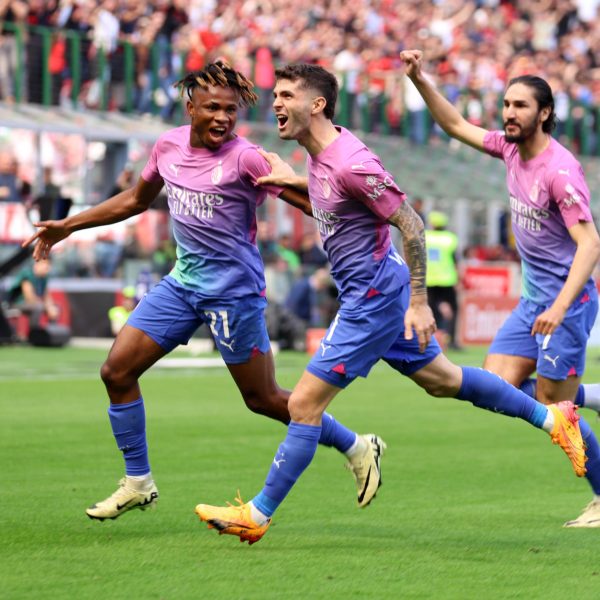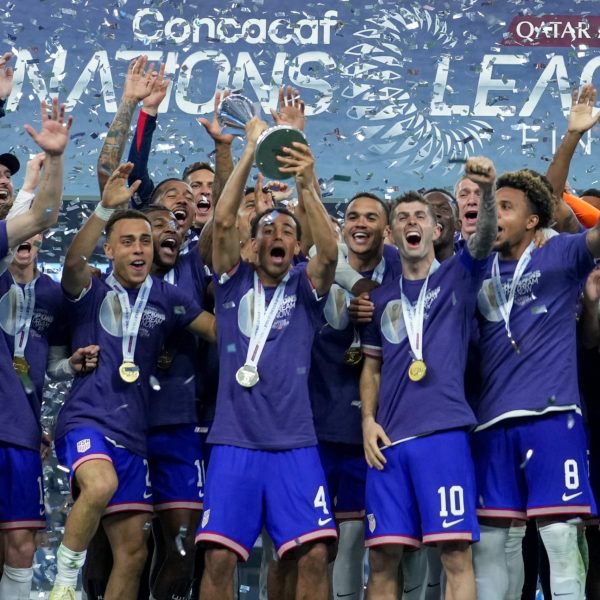The job description for full backs continues to change as the skill required to play the position means taking on offensive as well as defensive roles.
The changing role of the full back
By Clemente Lisi – NEW YORK, NY (Jul 19, 2021) US Soccer Players – Soccer tactics have changed over the last few decades, but no position has undergone the biggest evolution than full back. Primarily a defensive role, the players in that position have increasingly aided the attack in recent years. Carlos Alberto, captain of the star-studded Brazil squad that won the 1970 World Cup, helped revolutionize the position. Some two decades later, it was another Brazilian who helped make the position what it is today. Roberto Carlos, first at Inter Milan and subsequently with Real Madrid, showed how a full back could also be used in midfield and even as a winger.
It’s probably true that few kids dream of playing full back. Everyone wants to either score goals or save them. It’s the reason why the former Liverpool defender-turned-TV pundit Jamie Carragher once dismissed those who play that position as either a failed wide midfielder or unsuccessful center back. “Nobody wants to grow up to be Gary Neville,” he said, referring to the former Manchester United and England right back.
Neville himself spent a chunk of his career venturing across the other side of the field to help out David Beckham, the player who ended up getting most of the attention. Neville was also a more traditional defender, both reliable and technically gifted, who could also often play at center back. It takes nothing away from his game that more kids wanted to be Beckham.
Things have changed since the late ’90s. Full backs are the ones who consistently see the most action throughout a game. They can block shots when opponents are in their half, then switch to an offensive position when their team has possession.
Roberto Carlos was a creative player, not all that interested in staying back. Instead, he created plays on the left flank and provided crosses for strikers. In his case, he was also a dead-ball expert with his swerving free kicks from outside the box. Roberto Carlos helped Real Madrid win three Champions League titles among his many accolades. He also won the 2002 World Cup with Brazil with Cafu on the right side possessing some similar qualities. Roberto Carlos was the exception at the time. Fast forward a few years and the position has developed.
The modern-day full back has to have several qualities. The player needs exceptional ball control, vision, and speed. That last one is crucial given that the player has to run forward to generate offense, then track back and defend. The recent Euros featured some wonderful flying full backs. Most notably, Italy’s left back Leonardo Spinazzola and England’s right back Kyle Walker lit up the tournament. Spinazzola, who tore his ACL in the quarterfinals against Belgium, was a major reason why the Italians got the chance to lift the trophy.
Some coaches have employed tactics that increasingly rely on the position. Jurgen Klopp is one of them. At Liverpool, his 4-4-2 pressing system employs wingbacks that help generate counterattacks much in the same way he did at Borussia Dortmund. With Liverpool, full backs Trent Alex Arnold on the right and Andy Robertson on the left have helped the Premier League side to much success.
Those tactical trends also influence MLS. The best practitioner of this position in the United States has been right back Graham Zusi. His overlapping runs and ability to generate offense for Sporting Kansas City and the USMNT were wonderful to watch.
In many MLS games, full backs are the engines that keep offenses purring. These players get lots of touches and are key for teams looking to make the playoffs. In fact, MLS has done a wonderful job producing wingbacks. In an even more recent example on the National Team level, the USA’s Shaq Moore, currently playing with Spanish club CD Tenerife, at right back has been one of the bright spots at this Gold Cup.
The USMNT has lots of depth at that position if you consider that Sergino Dest, Reggie Cannon, and Bryan Reynolds can also play at right back. Moore, Cannon and Reynolds all have ties to FC Dallas, widely considered one of the best academy systems in this country. Imagine a version of FC Dallas able to hold onto those players, and the Western Conference table looks different.
Seattle Sounders FC, meanwhile, leads in the Supporters’ Shield race. Heading into this weekend, the Sounders have conceded just eight goals in 13 games. Offensively, about 50% of the passes that helped generate an attack came either from the left or right sides. Credit that to coach Brian Schmetzer’s tactics. Players like right back Alex Roldan, who has a goal and three assists, and left back Brad Smith, three goals and three assists, have been outstanding as we approach the All-Star break. Seattle’s undefeated run came to an end with Roldan on international duty.
Meanwhile, the New England Revolution has been the strongest and most consistent side in the Eastern Conference. They have averaged about 45% of passes on the flanks that helped get the ball forward. Coach Bruce Arena has relied primarily on DeJuan Jones on the left. He has a goal and two assists. On the right side, Brandon Bye has a goal and an assist this season. Both Jones and Bye have shown tenacity and pace and are a major reason why Arena’s side is in contention.
The full back position is ever-evolving. It will be interesting to see how the position continues to change and how it continues to affect team tactics in MLS as the season rolls on this summer and further ahead at the national team level ahead of next year’s World Cup.
Clemente Lisi is a regular contributor to US Soccer Players. He is also the author of A History of the World Cup: 1930-2018.






